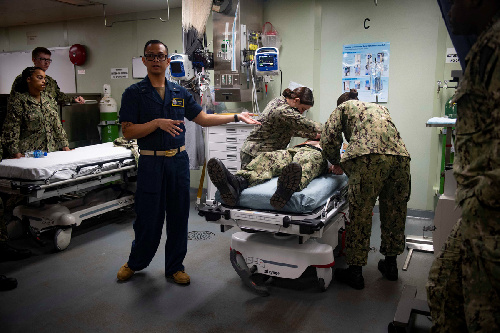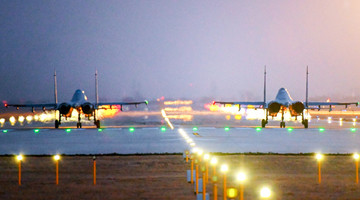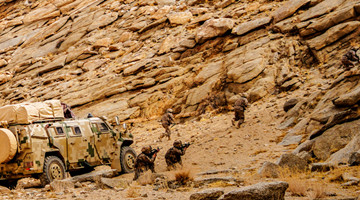
As the COVID-19 pandemic is getting increasingly serious in the US, the Americans are paying close attention to what or how much the US military can do to fight the pandemic. On March 28, local time, the US President Donald Trump visited the Naval Station Norfolk in California to see off the much-anticipated Military Sealift Command hospital ship USNS Comfort (T-AH-20), which was seen as a high-profile mobilization order for the US military to join the anti-pandemic efforts.
However, owing to multiple factors, the US military is likely to merely play second fiddle in the COVID-19 combat.
First of all, the highly contagious novel coronavirus prevents the US military from fully exerting itself. The US military has only two 69,000-ton Mercy-class hospital ships. Although it’s the world’s largest ocean-going hospital ship equipped with 1,000 beds (including 80 beds in ICU) and 12 operation rooms, it’s mainly designed for surgical operations and used to save and treat soldiers suffering burning, gun or artillery injuries during wartime or maritime conflicts. Actually, the ship has no isolation section or negative pressure wards, making it unsuitable for the treatment and care of patients suffering from infectious respiratory diseases.
Therefore, the US navy’s hospital ship will serve as a transfer hospital that will provide comprehensive medical care and services for non-COVID-19 patients, so that the local medical staff can concentrate on treating COVID-19 patients with the freed-up ICUs and ventilators.
Second, the US military doesn’t have enough medical personnel and it has to enlist civilians in wartime. The Mercy-class hospital ship can be staffed with more than 1,200 medical personnel in wartime or under special circumstances, including nine senior medical officers. But the US navy only assigned less than 1,000 medical and supportive personnel this time, indicating a manpower shortage.
Besides, these medical staffs are best at regular surgical operation. Although they can provide ICU care and regular nursing, they have almost zero training in COVID-19-related treatment and care, and it will be hard for them to directly engage in such work. Even if they are trained on the spot, there is neither time nor conditions to make them fully prepared.
Third, the US military already has a full plate with a growing number of COVID-19 infections. According to the US Department of Defense (DoD), 414 service members have been infected with COVID-19 as of March 26, including 280 in active service and 134 civilian personnel. The USS Theodore Roosevelt and USS Ronald Reagan aircraft carriers have both reported confirmed COVID-19 cases, with the number of infections still on the rise. Almost 5,000 people on board are quarantined or under testing. Considering the rising number of infected service members, the Pentagon has ordered a suspension of all travels, deployments and exercises of American troops, including those stationed overseas, to contain the spread of COVID-19.
The number of confirmed COVID-19 patients has been increasing at a daily rate of more than 10,000 cases. The mounting anti-pandemic pressure has forced Donald Trump, the commander-in-chief of the three services, and the top brass at Pentagon to “tap the army’s potential” to the largest.
For one thing, the National Guard is ordered to join the anti-pandemic battle with concrete actions. For instance, orders were given days ago to build cabin hospitals in the State of New York, California, and Washington, areas that are hit hardest by the pandemic, with 4,000 beds for COVID-19 patients.
For another, according to the Constitution and the National Emergencies Act, the DoD and Department of Homeland Security are authorized to enlist reservists of the armed forces to join the battle against the virus. According to the mobilization order, no more than one million reservists will be enlisted for the service term of no more than two years. It is the fourth time to mobilize the reservists by a US president since WWII, with the largest scale ever.
Last but not least, retired medical workers are summoned back to help frontline staff. With the rising number of confirmed cases, the medical staff working on the front line are under intensified pressure due to understaffing. An internal email from the US military shows that more doctors and nurses are needed at the ICU, anesthesiology department and respiratory department, but the retired military medical personnel can decide on their own whether to answer the call.









